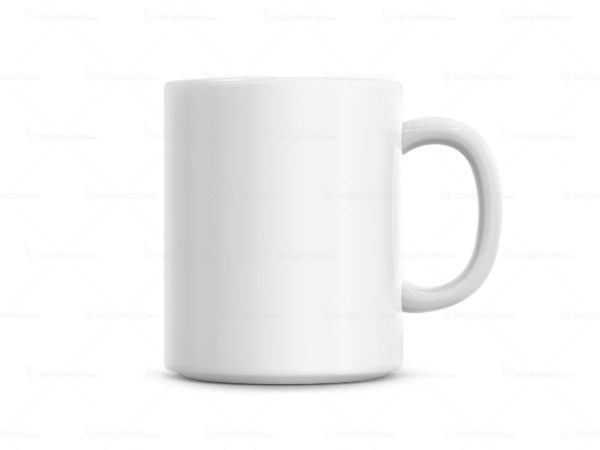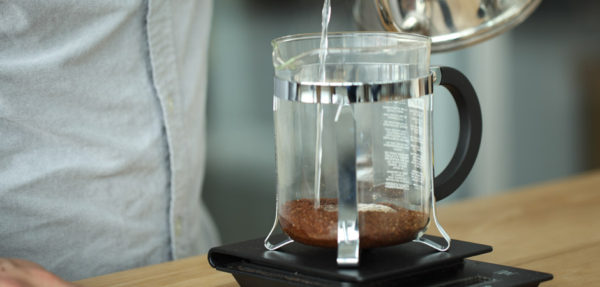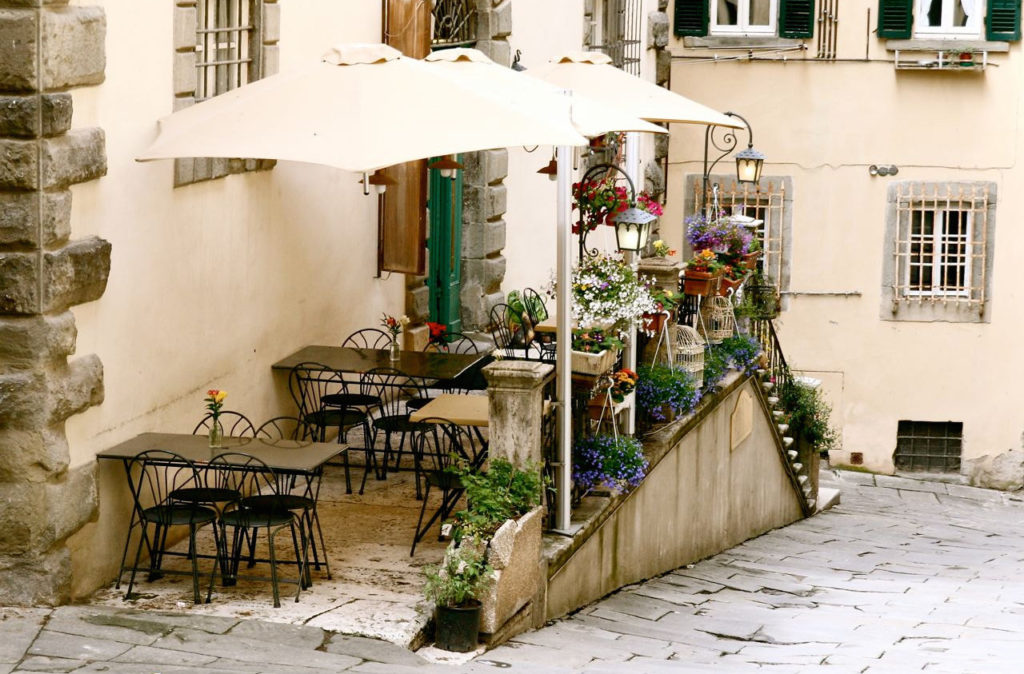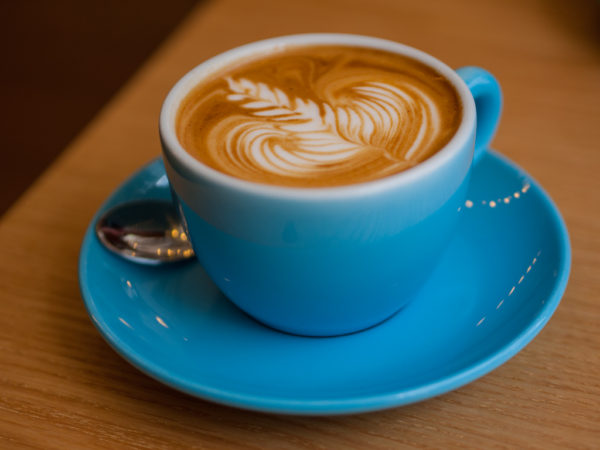The origins of the flat white are hotly contested. Both New Zealand and Australia claim to have coined the term “”flat white”. And while I’ve previously written a summary of the various definitions of the flat white, to really understand the origins of the drink, we need to go back in time to the 1980s.

I think the flat white was an attempt to get cafes to make the sort of coffee that New Zealanders were used to making at home. To understand why this is, we need to go back to how coffee was made in the home in New Zealand before cafes became a popular place to hang out.
Black and white coffee at home
The basic convention for describing coffee prepared at home in New Zealand is to refer to coffee without milk as black and coffee with milk as white. So a common question you would ask a guest is “Would you like your coffee black or white?”

Most coffee at home in New Zealand is made using a french press or as we call it, a plunger. This style of coffee makes for a nice long mug of black coffee or a warm comforting white coffee made with just a splash of milk.
In New Zealand, a shot of espresso is called a short black. Every other coffee name is built on that convention. For example, an espresso topped up with hot water is called a long black.
Born from the clash of cultures
My theory on the origins of the flat white is that it comes from the overlap between customers used to simple plunger coffee at home and the birth of Italian cafes in Sydney, Melbourne and Auckland run by new immigrants from Europe.

The Italian proprietors would be used to accepting orders using the Italian naming conventions for coffee. The basics being an espresso and cappuccino. When confronted with customers ordering a “black coffee” or a “white coffee” they would have been thoroughly confused. Those ordering a black coffee could probably mumble through by requesting some additional hot water, but those ordering a coffee with milk would often end up with a cappuccino.
The Italian terms that describe the simple coffee drink that the average customer wanted were probably too hard to pronounce. For example the cortado, dopio or macchiato could all have been perfectly serviceable drinks but the names wouldn’t have been considered simple and there are no easy anglicised terms for these drinks. Instead it came down to a battle between the cappuccino and the latte to be the “white coffee” of the antipodes.
Why not order a cappuccino?
The cappuccino in New Zealand was made with stiff foam and almost no liquid milk and was considered a drink for children because it is usually served with chocolate sprinkles.
Milk in Australia and New Zealand comes only from free range organic cows because that’s all we have in Australia and in New Zealand. When frothed aggressively, New Zealand milk can form an extremely stiff foam with large bubbles. The texture of a cappuccino in New Zealand can be almost like marshmallow.
Ordering a white coffee and then being handed a cappuccino with chocolate sprinkles would not be considered masculine enough for an Australian bloke.
Why not order a latte?
The latte in New Zealand was made with cold milk or heated milk with almost no foam and was considered a weak drink for intellectuals, political liberals and new mothers. The result of ordering a latte in New Zealand can vary wildly from a tall glass of cold milk drowning a lone shot of espresso to a tiny machiatto and all the way back out to a giant slurping bowl. Not a safe bet for the man on the go.
The evolution of the flat white
This leaves a normal Kiwi bloke with no good options for ordering a plain white coffee with milk like they were used to at home. So the evolution of the flat white probably went something like this:
Customer: One ‘white coffee’ please.
Cafe: Hands customer a cappuccino.
Customer: That’s too frothy. Can I have one with plain milk?
Cafe: Hands customer a latte.
Customer: That tastes weak and milky. Could you make something that has more froth than a latte and less froth than a cappuccino?
Cafe: Hands customer an espresso in a mug with a nice even blend of froth and milk.
Customer: Perfect. I’m going to call this a ‘flat’ white.
Why the term “flat”?
In New Zealand we use the term “flat” to describe soft drink (or soda) that has lost its fizz and doesn’t have any bubbles. So “flat” seems like a natural term for Kiwis to use to describe a coffee with fewer bubbles than a cappuccino (which was the dominant espresso beverage in NZ in the 1980s).
International spread of the flat white
The reason the individual originator of the term flat white is shrouded the mystery is that the term probably involved from dozens or even hundreds of these small interactions where Italian cafe proprietors gradually began to understand what their customers wanted.
Despite its present hipster incarnations in London, New York and Berlin, the flat white began life as an attempt to recreate the comforting builder’s mug of plunger coffee with a dash of milk.

The drink that the term describes has probably evolved since then to become a little smaller and little more frothy than a simple “white coffee” at home. The flat white has come a long way from its humble origins. It’s now one of the greatest cultural exports of Australia and New Zealand.
You did a really good job with this post. I have always heard the term flat white but didnt know what it meant or where it originated from. Again, awesome job!
Australia and NZ claim to have invented the term. Well, they are probably both wrong.
I’m just watching a 1962 British B movie called “Danger by my side”. A bloke goes into a cafe and asks for a flat white coffee.
How the flat white came about is very interesting. I had no idea that the cappuccino used to be reserved for children in N.Z. Here in Australia we now see parents ordering a “babyccino” for their kids. It is mostly milk, served in a small cup and of course sprinkled with chocolate.
We give our kids a “Fluffy”. A bit of warm milk, froth with a dusting of chocolate. I remembe my first Cappuccino at age 10ish. I was convinced it was warm dirty dishwater
Alright, I have been reading your blog, amongst others, and I can’t understand – is Cortado and Machiatto much different then (the type of Machiatto where you don’t put a scoop of froth, but pour a bit of textured milk in)? There seem to be too many similar drinks now, and with all the variations that the barista can make, sometimes the differences disappear.
Cortado is Spanish, Macchiato is Italian.
As an indigenous Australian I can clarify a single detail of this brilliant post. The “flat” refers to the foam being scraped low, “flat”, rather than heaped in a big alpine meringue as in the case of a 1980s cappuccino. The flat white can be seen, in this sense, as a cappuccino with a buzz cut.
That’s one the best explanations for a flat white that I’ve read over the years.
I still remember the barista’s face when I ordered a flat white in London around 10 years ago. Looked at me like I was from outer space!
Nice! As a NZer I’ll just clarify that no, people did not order actual cappuccinos with coffee in for their kids. Well not anyone I knew anyway. When I was a kid in the 90’s, before I started on to the good old flat white, it was all about the ‘fluffy’ (just plain milk fluffed up with sprinkles). Which seems to be what UK people call ‘babycino’s. (I now live in the uk). I remember them being the shit man.
Good post but milk in NZ is not usually organic. It is free range but organic means NO chemicals (such as industrially produced fertilisers) have been used. Term organic is subject to very specific controls.
I’m traveling in New Zealand right now and had my first “flat white” yesterday. I fell in love. It’s a lovely, comforting, yet bracing cup of coffee!
Now I can order a “proper” cuppa the next time I’m in Sydney. Cairns I’m not too sure of though. I think I’ll still get the odd look just because…
I like AJ’s description: cappuccino with a buzz cut. Though the locals here don’t get it.
Great article. Despite drinking Flat Whites for many years now, I have only recently discovered its origin lay in NZ/AUS.
I will take you to task on one point though. Free range cows are not automatically organic cows. Although in NZ we have very strict hygene rules for the farm and factory, and laws prohibiting additives and blending, this does not make the product organic.
I read this and i still not sure what is flat white coffee. What could be the equivalent in my country (Bosnia) for the term flat white coffee maybe espresso with milk or is it short or long espresso with milk. Is it possible to make flat white coffee with black turkish coffee?
Espresso with textured milk on top, when the foam has settled you want it about the thickness of your little finger. It should be in a smaller cup.
In our French cafe in Remuera NZ in the 1990’s, we named our kid’s drink a ‘Bambicino’ – much better than ‘Babycino’ and derived from the Italian ‘bambino’. Feel free to use the name.
Like others said, NZ ( and Australian) milk are seldom organic.
More importantly, never ever heard of kids being given a cappuccino with sprinkles, anywhere, ever.
Children were in fact seldom ever given coffee to drink in the time range you outline, and this nakes your entire theory highly suspect
The main point that most baristas operating in the 80s and 90s have made to me, is rhat kiwis wanted a coffee with moe body and volume from the milk than a foamy coffee, so the penchant for textured milk increased. They also wanted double shot, and last time I checked – double shot was still the standard at good cafes, though cheaper places do single and ask or offer a double at a higher price.
Several have told me the clincher was the fern leaf which is seldom replicated in Oz cafes- according to baristas who have worked both sides of the ditch.
I was in a coffee shop in New York a couple of years ago, and while we discussed what we were planning to order, the waitress said proudly, “I could make you a flat white…”. “Thanks darl”, we replied.
Ok, can you sort out this nonsense and tell me if the “original ” flat white was served in a glass?
It wasn’t, no. It was served in what is now considered a ‘regular size’ cup which then evolved (or devolved if you will, in terms of size at least). There is perhaps an argument to be made that in was first served in those classic c. 1980s/90s style glass mugs that used to feature prominently, as far as I remember, in almost every single sports club or staff/smoko room ever, but the evidence is scant at best.
A close equivalent I found in Spain, or at least Barcelona, is “café con leche”. Literally coffee with milk. I think the only real difference is the heat the milk reaches.
When Peter says he ‘thinks’ the flat white was an attempt to emulate the typical homemade coffee in a newly espresso based cafe setting, he’s correct — mostly. Firstly, the binary offer of only either black or white coffee at home – at least in the colonial setting – can trace its roots to the norms of British ‘gumboot’ tea drinking norms. So long as it wasn’t Earl Grey (traditionally served with a choice of either milk *or* lemon) the tea one would serve at home would be offered either black or with milk. After the second world war, there were actually *two* types of coffee that became widely available – instant (first) and, as Peter suggests, plunger or french pressed. Not known for either flexibility or rapid adaptability (a perhaps contentious statement now but at least not back then) the people of New Zealand treated this new drink basically the same as the only other formal, if you will, hot drink at the time, being tea. You start with the ‘pure, unadulterated’ form and then either leave it be, or add milk (and/or sugar) to soften the bitterness. Kiwis got used to this – afterall, it was a relatively easy transition: you take hot, bitter brew and either accept it or add milk/sugar as it suits. It was the introduction of espresso coffee (see: new thing, recall: traditionally averse to change) that necessitated the creation of the infamous flat white. Simply, espresso itself was too bitter, but BOTH cappuccino *and* latte were too milky (nevermind the froth). What was necessarily created was a coffee/milk concoction which took the domestic ‘white’ coffee – constituted by a base of either standard instant or plunger with an added dash of milk – but used super concentrated espresso as the base. At 1/3 espresso and 2/3 hot (but **quite obviously to anyone who has ever tasted the bitter rankness of actually boiled milk, not boiling) milk with just enough froth to maintain the prominence, though not totality, of the classic caramel coloured espresso crema on top (meaning maybe between 2 and 5 mm of froth), the classic flat white is, in fact, a perfect amalgam of the old and the new.
I travelled from the UK to NZ and Australia on business during the late 80s &90s. Everywhere I went in NZ, from Invercargill in the south to Whangarei in the north I could order a flat white. In Australia I could only order one in the cities, out in the bush it was either a coffee with milk – a white coffee or black without milk. Traditionally a flat white is served with an elaborate fern leaf design in the froth. Is this a clue to the origins of a flat white? Yes, it started in the land of the kiwi and the fern, New Zealand.
All very interesting,but complete nonsense
I have literally just watched the movie ‘Danger by my Side’ (1963) and a character in a coffeee shop asks the waitress for a ‘flat white coffee’
Just watching a British film from 1963 Danger By My Side the term flat white Coffee is used in the film.